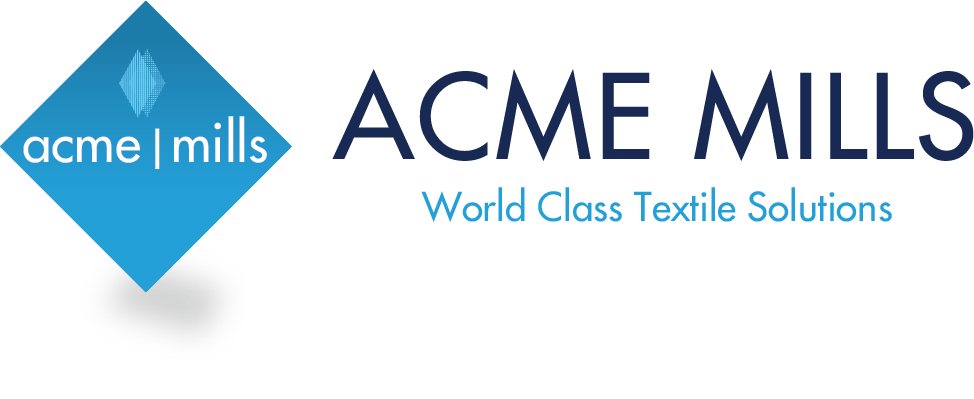“Water filtration is the process of removing undesirable chemicals, biological contaminants, suspended solids and gasses from contaminated water. The goal is to produce safe and clean water for a specific purpose. In past years, nonwovens have been seen as pillagers in the filtration market, taking market share and applications from other types of media such as wovens and paper. “The demand for energy savings, low cost, recyclability and light weight gave nonwovens an advantage over other media.”
Fabric Filter today has been a substantial demand all over the world due to increase in water pollution. This has caused a technical awareness in continuous research activity for manufacturing of more innovative solutions. These today are to create clothes with special weave, to manufacture customized products, in order to satisfy a complete demand of the outsourcing market wide range of filter fabrics – available in different fibers. According to the stats gathered there would be an increase in demand in coming years. Focusing on filter fabric as a main; its fabric manufacturing technique, selection criteria, filtration efficiency, filter performance and its various applications in brief.
Today we are going to look at something different as the use of nonwovens in the filtration. Also there are many researchers going on through non woven fabric manufacturer.
Introduction Non-Woven In Filtration
To improve the ongoing development in the application of nonwovens technology it will help both economies a industry to give a boost. It has been established in last few years that the characteristics of technical textiles can be enhanced by using nonwoven technology. For example, durability, breathability, water repellency, fire retardancy, antimicrobial properties and barrier properties etc. can be improved. Nonwovens accounts for about 40% of technical textiles in terms of tonnage.
According to Messe Frankfurt, the general technical textiles industry can be broadly classified into twelve sectors such as Aristech, Protect, Geotech, etc. Major industrial applications include geotextiles, medical textiles, agricultural textiles, sports textiles and protective textiles. Among these industrial applications some of the prominent sectors where nonwoven fabrics find applications include geotextiles, automotive textiles, filtration, medical textiles, defense and sports textiles.
Why nonwovens for filtration?
Woven and knit fabrics are two-dimensional filter bag media in which yarns overlap one another. Due to the overlapping of yarns, the size of the pore, or the opening between the yarns, is quite large; which can be seen by holding up a piece of these filter fabrics into the light. The only area which these fabrics allow air to pass through are the visible holes. The other areas are void, therefore, decreasing the available pore surface area. Over a longer period of time, particles will fill up the pores and clean the non woven filter bags will be of no help. At this stage, the pressure differential will remain permanently high and the filters will have to be replaced.
Most of the problems created by these two filter fabrics can be corrected by changing to needle punched fabrics, also called Needle Felted fabrics. Needle Felted fabrics are 3-dimensional in structure and are comprised of very fine fibers, which are generally 30 microns or less in diameter. The pore sizes are much smaller than the pore sizes of woven or knit fabrics. As a result, it is possible for small particles to be captured on the surface of the filter media. Once the particles are on the surface, they are much easier to clean, resulting in the pressure drop remaining at moderate to low levels and an increased non woven bags filter service live.
Advantages of nonwoven filter over the woven filters are:
- High filtration efficiency.
- High permeability
- Less blinding tendency
- No yarn slippage as in woven media
- There is no limitation for thickness.
- High production rate.
- Continuous process line.
Nonwovens are growing at a very fast rate to help filter media manufacturers to offer improved efficiency, better pressure drops and also overall better performance. Today manufacturers have many choices to choose from for deciding which media filter will give the best performance.
Types of filtration:
2. Ultra-Filtration(UF)
Ultra filtration is done with various membrane filtration with the forces like pressure or concentration gradients which lead to separation through the semipermeable membrane. Suspended solids and solutes of high molecular weight are retained in the so-called retentate, while water and low molecular weight solutes pass through the membrane in the permeate. This separation process is used in industry and research for purifying and concentrating macromolecular (103 – 106 Da) solutions, especially protein solutions. Ultra-filtration membranes are defined by the Molecular Weight Cutoff (MWCO) of the membrane used. Ultra-filtration is applied in cross-flow or dead-end mode.
UF is used extensively in the dairy industry. UF can also be used for the removal of particulates and macromolecules from raw water to produce potable water.
2. Nano-filtration
Nanofiltration is a membrane filtration based method that uses nanometer-sized cylindrical through-pores that pass through the membrane at a 90°. Nanofiltration membranes have pore sizes from 1-10 Angstrom, smaller than that used in microfiltration and ultrafiltration, but just larger than that in reverse osmosis. Membranes used are predominantly created from polymer thin films. Materials that are commonly used include polyethylene terephthalate. Pore dimensions are controlled by pH, temperature and time during development with pore densities ranging from 1 to 106 pores per cm2. Membranes made from polyethylene terephthalate and other similar materials are referred to as “track-etch” membranes, named after the way the pores on the membranes are made.
| Application Field | Uses |
| Fine chemistry and Pharmaceuticals | Non-thermal solvent recovery and managementRoom temperature solvent exchange |
| Oil and Petroleum chemistry | Removal of tar components in feed
Purification of gas condensates |
| Natural Essential Oils and similar products | Fractionation of crude extractsEnrichment of natural compounds Gentle Separations |
| Medicine | Able to extract amino acids and lipids from blood and other cell culture. |
3. Microfi

ltration
The typical particle size used for microfiltration ranges from about 0.1 to 10 µm. In terms of approximate molecular weight, these membranes can separate macromolecules generally less than 100,000 g/mol. The filters used in the microfiltration process are specially designed to prevent particles such as sediment, algae, protozoa or large bacteria from passing through a specially designed filter.
Micro-filtration applications
A) Water Treatment
The most important use of microfiltration membranes is for the treatment of water supplies. The membranes are a key step in the primary disinfection of the uptake water stream. Such a stream might contain pathogens such as the protozoa Cryptosporidium and Giardia lamblia which are responsible for numerous disease outbreaks. Both species show a gradual resistance to traditional disinfectants i.e. chlorine. The use of MF membranes presents a physical means of separation (a barrier) as opposed to a chemical alternative. In this sense, both filtration and disinfection take place in a single step, negating the extra cost of chemical dosage and the corresponding equipment. Similarly, the MF membranes are used in secondary wastewater effluents to remove turbidity but also to provide treatment for disinfection.
B) Sterilization
Another crucial application of microfiltration membranes lies in the cold sterilization of beverages and pharmaceuticals. Historically, the heat was used to sterilize refreshments such as juice, wine, and beer, in particular, however, a palatable loss in flavor was clearly evident upon heating. Similarly, pharmaceuticals have been shown to lose their effectiveness upon heat addition. Micro filtration membranes are employed in these industries as a method to remove bacteria and other undesired suspensions from liquids, a procedure termed as ‘cold sterilization’, which negate the use of heat.
C) Petroleum Refining
Furthermore, microfiltration membranes are finding increasing use in areas such as petroleum refining, in which the removal of particulates from flue gasses is of particular concern. The key challenges/requirements for this technology are the ability of the membrane modules to withstand high temperatures i.e. maintain stability, but also the design must be such to provide a very thin sheeting to facilitate an increase in flux. In addition, the modules must have a low fouling profile and most importantly, be available at a low-cost for the system to be financially viable.
D) Dairy Processing
Aside from the above applications, microfiltration membranes have found dynamic use in major areas within the dairy industry, particularly for milk and whey processing. The MF membranes aid in the removal of bacteria and the associated spores from milk, by rejecting the harmful species from passing through. This is also a precursor for pasteurization, allowing for an extended shelf-life of the product. However, the most promising technique for MF membranes in this field pertains to the separation of casein from whey proteins i.e. serum milk proteins.
4. Reverse Osmosis(RO)
RO is a water purification technology that uses a semipermeable membrane. This membrane technology is not properly a filtration method. In reverse osmosis, an applied pressure is used to overcome osmotic pressure, a colligative property that is driven by chemical potential, a thermodynamic parameter. Reverse osmosis can remove many types of molecules and ions from solutions, and is used in both industrial processes and the production of potable water. The result is that the solute is retained on the pressurized side of the membrane and the pure solvent is allowed to pass to the other side. To be “selective”, this membrane should not allow large molecules or ions through the pores but should allow smaller components of the solution to pass freely. Moreover, reverse osmosis involves a diffusive mechanism, so that separation efficiency is dependent on solute concentration, pressure, and water flux rate.
Application of reverse osmosis
Reverse osmosis (RO) is most commonly known for its use in drinking water purification from seawater, removing the salt and other effluent materials from the water molecules [2].

Scope for nonwoven & technical textiles in India
The Governments of India’s aim and policies are all geared up towards having a double-digit inclusive growth. The exponential growth in the information technology industry in India has no doubt enhanced the middle-class population in India, but the growth has been confined to only certain segments of the society. India’s majority of the population, approximately 60% still live in rural areas. It is important to raise the standard of living of the rural population to have all-inclusive growth.
India’s current nonwoven production is around 50,000 tons/year as compared to China, which is 850,000 tons/year. Can India really race against China whose nonwoven industry has been growing over since the mid-1980s? The answer is Yes! India has abundant raw material resource and skilled labor force, which can be trained for the nonwoven industry. More importantly, India can get the know-how both from the West and East, which was not the case when the Chinese nonwovens industry developed. Unlike the commodity textile sector, where China really dominates, India can very well develop in the nonwoven sector. The market is not merely export, but can be predominantly domestic catering to the needs of the growing middle-class population, which will hit 800 million by 2012 [3].
Nonwoven Fabrics Market Size Is Expected To Reach $ 42.1 Bn By 2020
San Francisco, May 02, 2016 (GLOBE NEWSWIRE) – The global nonwoven fabrics market is expected to reach USD 42.1 billion by 2020. Growing production of baby diapers on account of increasing birth rate particularly in Asia-Pacific is expected to remain a key driving factor for the global nonwoven fabrics market. Increasing construction spending in emerging economies of China, India, and Brazil is also expected to have a positive influence on the market growth. Volatile prices of key raw materials are expected to remain a key challenge for market participants over the next six years.
Polypropylene fabric (nonwoven) was the highest consumed product segment accounted for over 60% of total market demand in 2013. PP nonwoven fabrics are also expected to witness highest growth rate over the next six years. Global nonwoven fabrics demand was 8,687.2 kilotons in 2013 and is expected to reach 13,652.4 kilotons by 2020, growing at a CAGR of 6.7% from 2014 to 2020.
Asia Pacific was the leading regional market and accounted for 42.4% of total market demand in 2013. The growth of major end-use industries particularly in emerging markets of China and India is expected to drive nonwoven fabrics market in the region over the forecast period. The Middle East and Africa is expected to be the fastest growing regional market for nonwoven fabrics at an estimated CAGR of 8.2% from 2014 to 2020. The global nonwoven fabrics market is highly fragmented in nature with the market witnessing frequent mergers & acquisitions by large companies in order to gain market share [4].
Global demand for nonwoven fabrics to cross 11 mn tons in 2019
The worldwide demand for nonwoven fabrics is forecast to rise 5.4 percent annually to 11.1 million metric tons in 2019 from 8.5 million ton in 2014, according to Freedonia Group’s latest report.
The market will be driven by an expected increase in the manufacture of key products made from nonwovens such as baby diapers, adult incontinence products, filters, wipes, disposable medical gowns, and various automotive components.
According to the report, India will see faster gains as it continues to rapidly develop its manufacturing and construction sectors. Central and South America, Eastern Europe, and the Africa/Mideast region each accounted for less than 10 percent of the global nonwovens market in 2014. These regions will post gains above the global average, based on favorable growth in domestic sales. However, due to the current market size, these three regions combined will account for less than 25 percent of global gains through 2019 [5].
Nonwoven Filter Media Market
The overall market demand for nonwoven filter media is expected to be driven by the oil & gas and pharmaceutical industries. Further, the demand is expected to boost due to its penetration into other end-user industries. Oil & gas and pharmaceutical industries have had the largest share for nonwoven filter media, over the recent years. Nonwoven filter media are used for surface cleaning, corrosion prevention, separation of unwanted solid deposits and control of particulate loading rates. Due to the multifunctionality of nonwoven filter media, they are considered to replace polyurethane foams in near future. Thus, the demand for nonwoven filter media is expected to show a continual growth for industries such as oil & gas and pharmaceutical over the coming years.
In terms of global market demand for nonwoven filter media, Asia Pacific is anticipated to show the fastest growth by 2020. China is estimated to show a fast paced demand for nonwoven filter media especially for their use as automotive filters, owing to increased number of vehicles. Meanwhile, the recent developments in the pharmaceutical industry in India can be considered to fuel the demand for nonwoven filter media by the end of forecast period. Considering rest of the world region, Brazil is likely to have emerging filtration market by 2020, due to increased oil drilling activities. North America and Europe regions are expected to show stagnant growth in demand by the end of forecast period for nonwoven filter media [6].
Arvind enters nonwoven fabric segment, eyes Rs100 crore in 3 years
With an investment of Rs 50 crore, AOG expects to break even within a year of its operations and post a turnover of Rs 100 crore in next three years. The manufacturing facility will produce 1,500 ton of products per annum.
In the joint venture, Arvind has 74% stake, while the rest 26% is held by OG Corporation. “The technical textile market in India is estimated at Rs 70,000 crore. Arvind Ltd’s technical textile business stood at Rs 300 crore for 2013-14 and they expect it to touch Rs 1,000 crore mark by 2017-18” said Punit Lalbhai, executive director of Arvind Ltd and CEO of the advanced materials division [7].
Initiatives by government
Indutech (Industrial products and components)
The Indian infotech segment is expected to grow at a rate of 18% to US$ 2,034 million by 2016-17 as per estimates of the Working Group on Textiles and Jute Industry, Ministry of Textiles, Government of India. Key Indian manufacturers in the segment include:
- Deciding wrapper: Bombay Dyeing, JKT Fabrics, and Noor Textiles
- Bolting cloth: Bombay Bolting Centre, Surat Bolting, Khanna Bolting
- Battery separators: Daramic Products and AGM separators
- Backing cloth for coated abrasives: Madura textiles and Keetex Textile
- Conveyor belts: Phoenix Yule, MRF, Sempertrans Nirlon
- Drive belts: Fenner India, Pix transmissions, Nirlon Ltd and L. G. Balakrishnan & Bros Ltd.
- Glass fibre fabric: UP Twiga Fibres, Montex Fiberglass, Satyaluxmi International, SRM International
Filtration applications using textiles have wide markets in India. COE Indutech works on these textile based filters.
PSG College of Technology has set up the COE in Industrial Textiles; this segment of Technical Textiles has a wide range of products such as Conveyor Belts, Automobile Textile, Filters etc. The COE is a one-stop shop for the industry for everything related to Indutech field of Technical Textiles.
Nonwoven
Ministry of Textiles has appointed DKTE Ichalkaranji as the CoE for Nonwovens. The COE is a one-stop shop for the industry looking for everything related to Nonwoven field of Technical Textiles.
Project carried at COE center for water filtration
From research results and discussion, it is cleared that, Woven fabric shows highest filtration efficiency 4.00% at 0.5 lit/min. Single layer nonwoven fabric having 800 needle-punching density shows highest filtration efficiency 65.83% at 0.5 lit/min. as compare to 200,400,600 needles punched density fabric and other two flow rates.
Hence, research scholar came to the conclusion that nonwoven fabric has better filtration efficiency than woven filter fabric at a lower flow rate. Results also indicate that nonwoven fabric having a lower air permeability which is responsible for better filtration efficiency. Also observed that woven fabric takes more time for filtration than nonwoven fabric [9].
Foreign Direct Investment Policy in Textiles
With the most liberal and transparent policies in FDI amongst emerging countries, India is a promising destination for FDI in the textile sector. 100% FDI is allowed in the textile sector under the automatic route. FDI in sectors to the extent permitted under automatic route does not require any prior approval either by the Government of India or Reserve Bank of India (RBI). Investors are required only to notify the RBI Regional Office within 30 days of receipt of inward remittance.
Ministry of Textiles has set up FDI Cell to attract FDI in the textile sector in the country. The FDI cell operates with the following objectives:
- To provide assistance and advisory support (including liaison with other organizations and State Governments);
- Assist foreign companies in finding out joint venture partners;
- To sort out operational problems;
- Maintenance and monitoring of data pertaining to domestic textile production and foreign investment [8]
Key players in Filtration Market
Some of the major players currently dominating the nonwoven filter media market include
- Freudenberg & Co. KG,
- I. du Pont de Nemours & Company,
- Toyobo Corporation,
- Toray Industries, Inc.,
- Ahlstrom Corporation,
- Clarcor Corporation and The Acme Group of Companies
New Products in Filtration
The New filter media Synteq XP
The core of every filtration is the filter element. By using the new filter media Synteq XP and an advanced manufacturing technology, the differential pressure is reduced significantly and up to 40 % additional energy savings can be achieved. These performance data is scientifically guaranteed according to ISO 12500-1. With Synteq XP Donaldson has developed a revolutionary filter media unlike anything else in the market.
Fleetguard fuel filters
Cleaner Fuel with NanoNet. NanoNet advanced media provides the best-known defense from contaminants in fuel to help keep your fuel injection equipment healthy. Maintaining a clean fuel system is critical in order to meet increasingly tough standards for modern diesel engines. NanoNet media, the American Filtration Society’s 2013 New Product of the Year winner, is available in a range of Fleetguard fuel filtration products.
Bacteria hold
ZENSUI insists that Bacteria Hold does not require frequent maintenance like cleaning the media since the media does not clog the water flow. The surface and inside of the media is very uneven, with a huge surface area, so many bacteria can live in there and process tons of water. The weight of Bacteria Hold is very light. 30L of the Bacteria Hold media weighs 4.5kg, but the normal media is somewhere around 30L/15kg.
Disruptor Technology for water filtration
Ahlstrom Corporation has developed a new Ahlstrom Disruptor Technology for water filtration. It is electro adsorptive technology which uses ion exchange and electro-adhesion for contaminant removal. It uses natural mineral fiber which provides better filtration efficiency for sub-contaminant particle removal.
Meteor™ Basalt Fabrics
Meteor™ Basalt filtration media is derived from volcanic rock and offers incredible operating temperature range, chemical resistance, and mechanical properties. Meteor™ is a filtration fabric comprised of an extremely stable scrim constructed of mineral Basalt fibers and yarns. The Basalt scrim is combined, via needle punching process, with a top layer of appropriate fibre.
Conclusion
The use of nonwovens in filtration is well-known and needs no elaborate discussion. However, more and more nanofiber-based products are finding applications either as stand alone filter media or in combination with conventional nonwovens. Nonwoven nanofiber filtration media is now filling the microfiltration performance gap that had existed in the past, offering benefits such as enhanced air quality, reduced energy cost, and longer service life. Nonwovens are ideal in filtration applications due to low cost, ease of strikethrough and increased efficiency.
Rising consumer awareness regarding health and safety as well as increasing environmental concerns regarding water and air pollution is expected to benefit the overall market growth.
The next driving factor of the demand for nonwoven filter media is its increased application in the automotive industry. Companies are investing in R&D to develop new technologies for increased efficiency and performance. Developed countries such as the U.S., UK, Germany, and Japan are expanding their technology to reuse water, improve its quality and reduce the chance of water contamination. Such efforts will increase the demand for nonwoven media filtration systems over the forecast period.
The technical textile industry is truly a dynamic and constantly evolving industry in which nonwoven is the key to success. Innovation has become essential to survival for companies in the increasingly competitive textile industry.












